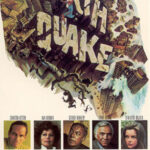During the night and early morning of December 3-4, 1984 a disaster occurred in Bhopal, India. A Union Carbide pesticide plant in Bhopal lost control of a tank filled with methyl isocyanate. A deadly vapor was released from the tank and into the air. Most of the residents of Bhopal were sleeping at the time of the gas leak. Many of them died while they were sleeping. Those who did not die immediately tried to flee and the streets of Bhopal were filled with panicked victims. Some of them were already dying. Hundreds of thousands of people were exposed to the gas. Their lives would be changed forever.
The leak occurred due to water being introduced into the tank of methyl isocyanate. The methyl isocyanate reacted with the water causing a build up of gas. The tank could not contain the pressure and the safety valve blew off of the tank. The pressure of the gas was also sufficient enough to blow through the protective layer of concrete surrounding the tank. The result was the release of a cloud of gas that quickly settled on Bhopal.
Around 20-30 tonnes of gas had been released. Methyl isocyanate gas is heavier than air, so it settled at ground level. Many of the victims immediately began displaying symptoms of exposure to the gas. Some reports state that workers at the plant began complaining of eye irritation before anyone knew that the gas had been released.
Two thousand residents of Bhopal died of exposure to the gas within days of the disaster. Some estimates are much higher. Three hundred thousand people were injured by the gas. Again, some estimates are much higher. An estimated one thousand animals died and six thousand were injured.
The victims that survived the first days presented with a range of symptoms. Symptoms include, but are not limited to, bronchitis, convulsions, fatigue, muscle weakness, eye ailments, and a variety of respiratory ailments. Autopsies of the victims of the Bhopal gas disaster show that the lungs and respiratory systems are the most severely effected by the gas.
Since then, victims have also suffered from tachycardia and other heart related problems. Other health problems that have been linked to the Bhopal gas disaster include pulmonary oedema, posttraumatic stress disorder, chronic fibrosis, pregnancy complications, birth defects, blindness of varying degrees, gastrointestinal disorders and immunodefficiencies. People still die as a direct result of exposure to the gas twenty-five years later.
There are many theories and claims that attempt to explain the reason why the tank failed. Union Carbide insists that an employee purposely sabotaged the tank by pouring water into it. However, the company has not brought any person forward nor have they explained why this unnamed person did it. They do claim that the Indian government is aware of the saboteur’s identity.
Many people believe that the tank and its safety equipment were faulty. There are also claims that there was a leaky valve that allowed water into the tank. Whatever the cause of the introduction of water into the tank, it is undeniable that the safety equipment was not sufficient to keep the leak under control.
Union Carbide denies responsibility for the gas leak to this day. They claim that they were not responsible for maintenance at the plant, though they owned more than 50% of the shares in the plant. If there was a disgruntled employee, nobody has taken responsibility for hiring that person either. Union Carbide did eventually pay out close to 500 million dollars to the victims of the Bhopal gas disaster.
There has been evidence presented that there is still waste at the site in Bhopal. This may or may not be linked to the gas disaster itself. If these claims are true, and they very well may be, Union Carbide is still denying responsibility for the cleanup. There is also waste left in evaporation ponds that are lined with polyethylene to prevent seepage. I have been able to find no information regarding who is responsible for maintaining these linings, if anyone.
To see Union Carbide’s statement on the Bhopal gas disaster click here.
To see someone else’s opinion of this statement click here and then drag your mouse over the statement.
Tremblay, Jean-Francois, Bhopal Today, retrieved 7/9/09, iitk.ac.in/che/jpg/C&EN;%20GOVERNMENT.htm
Sullivan, Dale, Bhopal Gas Tragedy: An Analysis, retrieved 7/9/09, hu.mtu.edu/hu.dept/tc@mtu/papers/bhopal.htm
Sriramachari, S., The Bhopal gas tragedy: An environmental disaster, retrieved 7/9/09, ias.ac.in/currsci/apr102004/905.pdf


